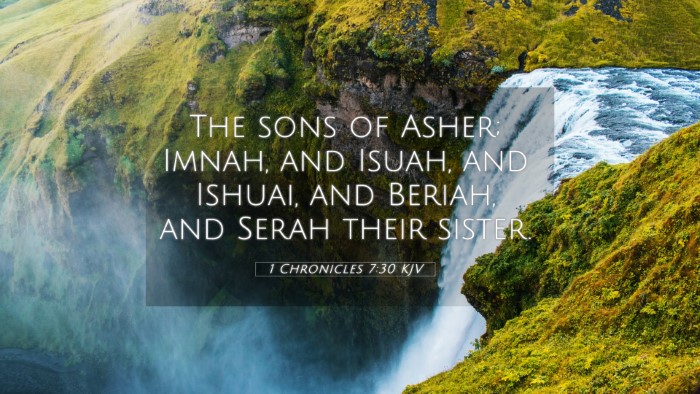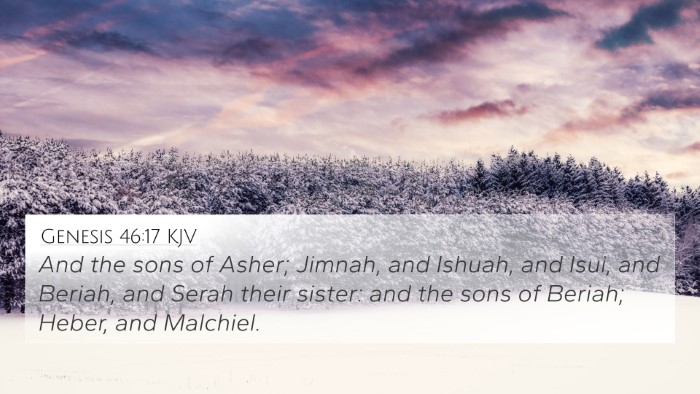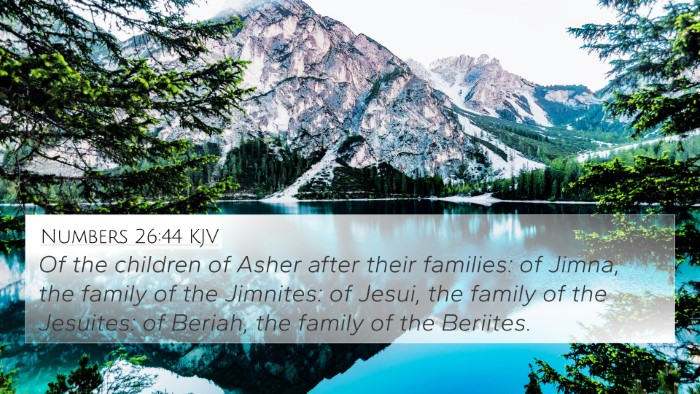Understanding 1 Chronicles 7:30
Verse: "And the sons of Ham were Cush, and Mizraim, and Put, and Canaan."
This verse provides insight into the genealogy of the descendants of Ham, one of Noah's sons. Understanding the sons of Ham is crucial for comprehending the particular tribes and nations that descended from him and their significance in Biblical history.
Summary of Meaning
The genealogical listing in 1 Chronicles 7:30 serves to connect historical events and peoples with God's overarching narrative. By tracing lineage, the scripture underscores the importance of family lineage in Biblical texts.
Commentary Insights
-
Matthew Henry:
Henry observes that the children of Ham contributed significantly to the formation of various nations, indicating their historical relevance. The mention of Cush, Mizraim, Put, and Canaan symbolizes the diversity of nations. Each descendant represents different geographical and cultural contexts that played a role throughout the Biblical narrative.
-
Albert Barnes:
Barnes points out that this verse aligns with other genealogical references, emphasizing the connection between the descendants of Noah and the wider Biblical themes of judgment, mercy, and covenant. The mention of these names foreshadows various interactions between Israel and these nations throughout scripture.
-
Adam Clarke:
Clarke highlights that this lineage sets the stage for understanding the future tensions and relationships between these nations and Israel. The genealogies not only document ancestry but also hint at the broader prophetic significance, where each name may reflect deeper theological themes.
Thematic Connections
The thematic connections present in 1 Chronicles 7:30 can be understood through the lens of God's unfolding plan in the narrative of Israel. Key themes include:
- Judgment and Mercy: The sons of Ham are often associated with rebellion against God, presenting a contrast to the obedient line of Shem.
- Covenants: The lineage establishes a backdrop against which God's covenant with Abraham is set.
- Divine Providence: The rise and fall of nations in relation to God's will and Israel's history serve as a crucial theme.
Cross-References
This verse connects well with several other scriptures, demonstrating the inter-Biblical dialogue:
- Genesis 10:6-20: This passage elaborates on the descendants of Ham, providing a fuller genealogical context.
- Psalm 78:51: Refers back to the events involving the descendants of Ham and their place in Israel's history.
- Isaiah 18:1: Discusses Cush, signaling the historical significance of this son of Ham.
- Jeremiah 46:1-2: Provides insight into Mizraim (Egypt) as a major nation in context.
- Deuteronomy 7:1: Mentions the Canaanites as a group in relation to the Israelites.
- Acts 8:27: Refers to an Ethiopian, possibly a descendant of Cush, adding to the narrative of the Gospel's reach.
- Daniel 11:43: Discusses Egypt's interactions with Israel, showing the ongoing relevance of Ham's descendants.
Conclusion
1 Chronicles 7:30 serves as much more than a simple genealogical note. It forms a critical part of a larger narrative that connects tribes, prophecies, and the unfolding of God's plan. Understanding these connections provides richer insights into Scripture as a whole.
Applying the Insights
For those seeking to deepen their comprehension of the Bible, tools for Bible cross-referencing are invaluable. Utilizing resources such as a Bible concordance or employing a systematic approach to cross-reference Bible study can illuminate connections between verses and reveal thematic structures that may otherwise be overlooked.
Using Bible Cross-References
To explore cross-references effectively, consider the following methods:
- Identify key terms in a verse and search for them in other sections of the Bible.
- Utilize thematic maps or charts that highlight relationships between Old and New Testament scriptures.
- Engage with scholarly commentaries that provide insights into cross-referenced themes.
- Participate in Bible study groups that focus on the intersection of verses and their meanings.




